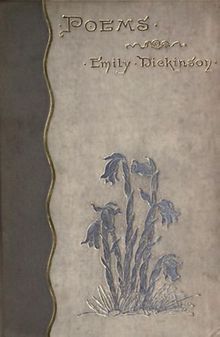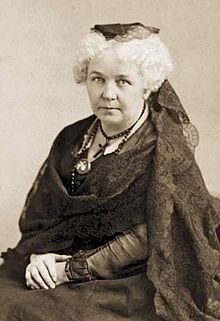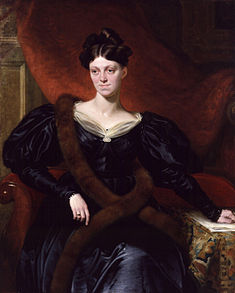Why is it said that the Empress Dowager Cixi contributed to the downfall of the Qing Dynasty?

 Empress Dowager Cixi ruled over China for about a half a century, and was one of the most powerful women in the world at that time. She was born on the 29th of November 1885, as the daughter of an ordinary official. When she was sixteen, she was chosen to be a concubine- or one of the many wives-of the Emperor. The birth of a son gave her the maximum status possible in China. Cixi was elevated from total obscurity to the central political stage of China as a figure of unique importance to the survival of the dynasty.
Empress Dowager Cixi ruled over China for about a half a century, and was one of the most powerful women in the world at that time. She was born on the 29th of November 1885, as the daughter of an ordinary official. When she was sixteen, she was chosen to be a concubine- or one of the many wives-of the Emperor. The birth of a son gave her the maximum status possible in China. Cixi was elevated from total obscurity to the central political stage of China as a figure of unique importance to the survival of the dynasty.In 1861, Emperor Hsien Feng died, and with that, Cixi’s son became emperor. She then got the title of empress. Cixi became more and more powerful, until finally in 1865, she seized the throne. It was because; she masterfully maintained a balance between the conservatives and the different sects of the time that the empress was able to ensure her power. She was a strong ruler, and put down the rebellions which endlessly threatened her. During her years in power, the Western nations gained great influence in China. Many people thought that, the best way to stop the outsiders, from taking over completely was to strengthen China with modern inventions like trains and telegraphs. However, Empress Cixi and her advisors were conservative, and resisted these changes.
The empress usually put her sawn interests ahead of the nations. She seized whatever she wanted by any means. She surrounded herself with money and banquets, jewels, and other luxuries. She was served 150 different dishes at a single banquet. She drank from a jade cup, and ate with golden chopsticks. She used navy funds to build herself a lavish summer palace. At the end of her life, her jewellery vault held 3,000 ebony boxes of her ‘everyday jewels’. Her lavish lifestyle made the country poorer, and the military weaker, and was later responsible for the defeat of the war against Japan.
There is no doubt that Empress Dowager Cixi had a sharp political sense and decisive mind, but under her rule, the Qing Dynasty grew more and more corrupt, and lost its power.




 Clara Barton is best known as the founder of the American Red Cross. She began a lifetime of helping others at the beginning of the Civil War, when she organized medical care for wounded soldiers.
Clara Barton is best known as the founder of the American Red Cross. She began a lifetime of helping others at the beginning of the Civil War, when she organized medical care for wounded soldiers.




 Harriet Tubman was born around 1820 in Maryland in the United States. Her parents were slaves, so she also was a slave when she was born. However, she escaped slavery in 1849, and travelled to the north of her country. She then became a conductor for the Underground Railroad, and helped slaves flee to freedom in the North. The Underground Railroad was a secret system of people of all races who helped slaves escape to the North-it was not an actual railroad at all.
Harriet Tubman was born around 1820 in Maryland in the United States. Her parents were slaves, so she also was a slave when she was born. However, she escaped slavery in 1849, and travelled to the north of her country. She then became a conductor for the Underground Railroad, and helped slaves flee to freedom in the North. The Underground Railroad was a secret system of people of all races who helped slaves escape to the North-it was not an actual railroad at all. George Eliot was the pen name of Mary Ann Evans, one of the leading English novelists of the 19th century. She used a male pen name to ensure her works were taken seriously in an era when female authors were usually associated with romantic novels. As a child, Mary Ann studied Latin, Greek, Italian, French, and German. She also became a skilled pianist. Later, when she became an author, she used the name ‘George Eliot’. In 1850, Eliot began contributing to the ‘Westminster Review’, a leading journal for philosophical radicals, and later became its editor.
George Eliot was the pen name of Mary Ann Evans, one of the leading English novelists of the 19th century. She used a male pen name to ensure her works were taken seriously in an era when female authors were usually associated with romantic novels. As a child, Mary Ann studied Latin, Greek, Italian, French, and German. She also became a skilled pianist. Later, when she became an author, she used the name ‘George Eliot’. In 1850, Eliot began contributing to the ‘Westminster Review’, a leading journal for philosophical radicals, and later became its editor. The Bronte Sisters, Charlotte, Emily and Anne, have charmed, inspired, and even shocked readers from the Victorian Age to the present. Raised in Haworth, Yorkshire, the three sisters produced such classics as Jane Eyre, Wuthering Heights, and The Tenant of Wild fell Hall. The characters in their books, such as the devoted governess, Jane Eyre, and the lovers, Heath cliff, Cathy, and Hareton, are unforgettable.
The Bronte Sisters, Charlotte, Emily and Anne, have charmed, inspired, and even shocked readers from the Victorian Age to the present. Raised in Haworth, Yorkshire, the three sisters produced such classics as Jane Eyre, Wuthering Heights, and The Tenant of Wild fell Hall. The characters in their books, such as the devoted governess, Jane Eyre, and the lovers, Heath cliff, Cathy, and Hareton, are unforgettable.
 Lucy Stone was an American reformer, who was a pioneer in the movement for women’s rights. In her lifetime, she achieved a number of important ‘firsts’ for which we can remember her. She was the first woman in Massachusetts to earn a college degree, and the first woman in the United States to keep her own name after marriage.
Lucy Stone was an American reformer, who was a pioneer in the movement for women’s rights. In her lifetime, she achieved a number of important ‘firsts’ for which we can remember her. She was the first woman in Massachusetts to earn a college degree, and the first woman in the United States to keep her own name after marriage.


 Margaret Fuller was America’s first true feminist. She was also a social reformer, critic, and teacher whose words enriched the lives of many people. Margaret received a good classical education, which was very unusual for a young girl at that time.
Margaret Fuller was America’s first true feminist. She was also a social reformer, critic, and teacher whose words enriched the lives of many people. Margaret received a good classical education, which was very unusual for a young girl at that time. Harriet Martineau is an inspiration for women with multiple disabilities. She suffered from ill heath, a number of disabilities, and deep childhood unhappiness. Still she became a major intellectual force of her day. Not only was she a scholarly success, but she exerted a strong social force to improve the status of women and the poor.
Harriet Martineau is an inspiration for women with multiple disabilities. She suffered from ill heath, a number of disabilities, and deep childhood unhappiness. Still she became a major intellectual force of her day. Not only was she a scholarly success, but she exerted a strong social force to improve the status of women and the poor. Dorothea Dix did more than anyone else of her generation to improve the lives of mentally ill people in America. In 1841, she volunteered to hold a devotional hour for women in the East Cambridge jail, and was aghast to discover that some of the tattered inmates were chained in a filthy, cold cell simply because they were mentally ill. Dix then devoted her life to improving conditions for the mentally ill. She travelled more than 30,000 miles over a three-year period to spur legislators into doing the right thing for the mentally ill. She became Superintendent of Female Nurses during the Civil War, and after the war, resumed travel throughout the United States and Europe on behalf of the mentally ill. By 1880, Dix had a direct hand in founding 32 of 123 mental hospitals in the country.
Dorothea Dix did more than anyone else of her generation to improve the lives of mentally ill people in America. In 1841, she volunteered to hold a devotional hour for women in the East Cambridge jail, and was aghast to discover that some of the tattered inmates were chained in a filthy, cold cell simply because they were mentally ill. Dix then devoted her life to improving conditions for the mentally ill. She travelled more than 30,000 miles over a three-year period to spur legislators into doing the right thing for the mentally ill. She became Superintendent of Female Nurses during the Civil War, and after the war, resumed travel throughout the United States and Europe on behalf of the mentally ill. By 1880, Dix had a direct hand in founding 32 of 123 mental hospitals in the country.